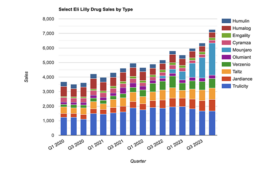Caliper Life Sciences announced the Quantum FX, a stand-alone microCT system for preclinical imaging. Introduced at the American Association for Cancer Research Annual Meeting 2010, the Quantum FX is a low dose, microCT system that provides researchers with a 3-dimensional anatomical view of disease activity, tumor development and therapeutic response over multiple time points during the course of a study.
Non-invasive imaging is critical to monitoring disease progression and therapeutic efficacy in preclinical drug development studies. The company’s IVIS imaging systems have earned recognition worldwide as enabling and innovative research tools for noninvasive preclinical research. More than 850 IVIS systems are in use in drug discovery and life science research laboratories and over 1,400 peer-reviewed research articles attest to their value in a wide spectrum of therapeutic areas including cancer research, infectious disease, metabolic disease, neurology, cardiovascular disease, toxicology and other applications. This system offers complementary 3-dimensional anatomical precision for current imaging applications, while also expanding the company’s offerings in areas including skeletal, vascular and respiratory disease.
Traditional microCT systems use high doses of radiation, which limit the number of images that can be acquired without altering the animal’s biological response. This system uses ultra-fast, sensitive and low dosage CT technology from Rigaku Corporation to create high resolution 3D images with minimal X-ray exposure. With this product, multiple images can be taken at many steps in a time-course study with minimal impact on the animal.
Optical imaging and 2D X-ray methods using instruments like IVIS Lumina XR are routinely used in drug development. 3D tomography and the co-registration of multiple modalities are key steps in the evolution of pre-clinical imaging and the development of translational techniques for clinical use. The use of Quantum low-dose CT in conjunction with IVIS Spectrum can provide, for example, co-registered images of tumor development that reveal the early stages of disease development without impacting the biology of the animal.
Filed Under: Drug Discovery




